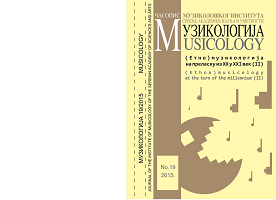
Оливера Васић Цока
In memoriam Olivera Vasić Coka(18. VIII 1946, Gornja Badanja – 28. X 2015, Beograd).
More...We kindly inform you that, as long as the subject affiliation of our 300.000+ articles is in progress, you might get unsufficient or no results on your third level or second level search. In this case, please broaden your search criteria.

In memoriam Olivera Vasić Coka(18. VIII 1946, Gornja Badanja – 28. X 2015, Beograd).
More...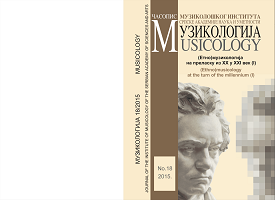
Review of: Trapped In Folklore? Studies In Music And Dance Tradition And Their Contemporary Transformations. Drago Kunej, Urša Šivic (eds.) Zürich – Münster: Lit Verlag, 2013.
More...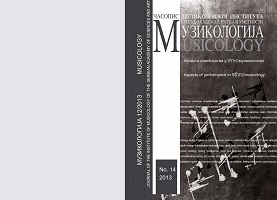
A fifty-year (1962–2012) period has been shown as a history of ethnochoreology supported by living memories of members of the International Council for Traditional Music (ICTM) Study Group on Ethnochoreology. Recently uncovered and juxtapositioned correspondence of three predecessors within earlier years of the International Folk Music Council (IFMC) broadens the history. This article reveals the emergence of ethnochoreology during the 1950s with publications of the two Janković sisters in Serbia with that of Gertrude Kurath in the United States, alongside correspondence with Maud Karpeles, the unheralded founder of the IFMC.
More...
The Janković sisters are pioneers of ethnochoreological research in Serbia. Their scholarly methodology is based on intenisve field research and their development of a unique system of dance notation, which enabled them to evolve a system of dance analysis. The year 2014 celebrates multiple anniversaries of Ljubica and Danica Janković, their lives and work, but most importantly, it marks the publication of the first of eight volumes of Narodne igre, beginning an eighty year tradition of scholarly investigation of traditional dances in Serbia. The aim of this article is to draw attention to the Janković sisters for their major contribution in developing ethnochoreology in Serbia.
More...
Review of: Fügedi János and Vavrinez András (eds.) Régi Magyar Táncstílus – Az Ugrós. Antológia / Old Hungarian Dance Style – The Ugrós. Anthology. Budapest: L’Harmattan Kiadó, MTA Bölcsészettudományi Kutatóközpont Zenetudományi Intézet, 2013. pp. 352.
More...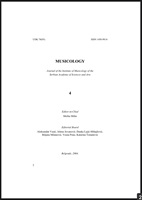
The premise of musicality of Beckett’s short dramas contains more questions than answers. Is the musicality of text present only in the work of Samuel Beckett? Do only the (musical) stage remarks in Beckett’s dramas suggest the idea of musicality? Can the absurdity of his output be expressed with music and through music? Some short musical compositions, especially by Alexandre Scriabine, can be in some way compared with Beckett’s “dramaticules”, but only in form not in the meaning and musical language. The question of hidden influences remains to be developed.
More...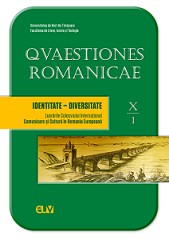
From individual to cultural representations present in their plays, Matei Vișniec and Vlad Zografi reframe stereotypes or decontextualise meanings. On one hand, they enter into the territory of a burlesque history, and on the other hand, they explore the area of parody and livresque. This paper depicts several hypostases of patchworked, simulated identities in plays such as Regele și cadavrul (The King and the Corpse), or the characters’ attempts to “survive” in Cu sufletul în roabă (With the Soul in the Wheelbarrow) or Așteptați să se mai potolească această caniculă (Wait for the Heat to die down). The “decomposition” is not only pursued at the level of the individual, as both authors resort to playing with levels or textual constructions in Crima din strada Uranus (Murder on Uranus Street), Atelier (Workshop), Spectatorul condamnat la moarte (The Spectator Condemned to Death). The mirrors and reflections, but also the identity gaps in the relationship between the West and the East will be followed in plays such as Petru sau Petele din soare (Peter or the Sun Spots), Viitorul e maculatură (The Future is Rubbish) and Occident Express.
More...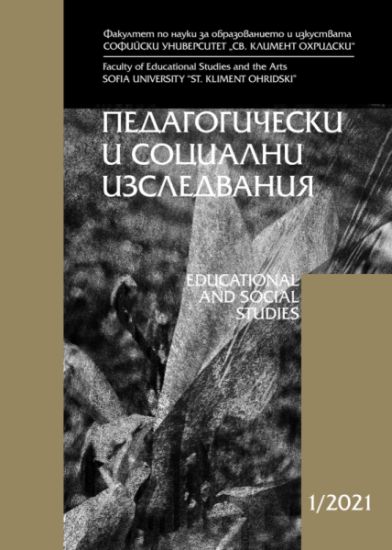
This article discusses the concept of “authentic voice”, originating in theatrical training, in relation with communicative competency and offers specific theatrical techniques for its development in educational practice. The focus is on speech as one of the elements of communication, and its efficiency. Language is one of the elements of communicative competency, which favors social relationships through the creation of texts in the process of social interaction. Linguistic competence includes not just the knowledge of linguistic elements and the rules for their combining, but also the mastery of paralinguistic phenomena such as intonation, prosody and rhythm of speech. These elements are deeply individual and can convey the communicator’s “authenticity”, in other words their personal attitude towards the object of communication. Our claim is that the capacity for such “personal investment” of the communication act, a warrant for its success, can be developed through theatrical techniques.
More...
In expert circles, attention has been drawn to the “1002nd Night Ball” created by the protagonists of Yugoslav and Serbian avant-garde, in particular on its dance and musical segments, moreover, the ballet “Le balai du valet” by Marko Ristić and Miloje Milojević, as well as the ensuing series of balls related to the Association of Friends of Art “Cvijeta Zuzorić”. On the other hand, it is an (almost) completely unknown fact that Rade Drainac’s original idea to throw a ball for the benefi t of artists and writers that needed fi nancial assistance because of diffi cult fi nancial situation (later replaced with an initiative to raise funds to build an art pavilion “Cvijeta Zuzorić”) matched the idea of the Union of Russian artists in Paris to organize a ball with the aim of contributing to mutual aid. The ball in Paris, with the participation of the most prominent avant-garde artists, took place exactly one week after the Belgrade ball, which also suggests the possible connection / synchronization of these two artistic events. Having this in mind, I offer a brief analysis of the concept and scope of the aforementioned artistic events from the perspective of the intermedia and multimedia strategies. I demonstrate that the Belgrade spectacle was envisioned and performed far more ambitiously than the Parisian one, and the thoroughness of the interweaving of various arts ranks it among those works (including Parade by Cocteau, Picasso and Satie, Skating-Rink by Canudo, Leger, and Honegger, La creation du monde by Cendrars, Léger and Milhaud, with Russian and Swedish Ballet) that aimed to achieve a Gesamtkunstwerk, i.e. a total work of avant-garde art.
More...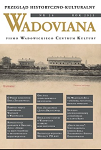
Report on the conference „Emil Zegadłowicz in the world of art, literature and theatre” held in Wadowice on April 12-14, 2023.
More...
The venerable arguments concerning the validity of harmonized music in the Orthodox Church continue. Serbia is unique in that the codifiers of the monophonic repertoire (in particular Stankoviš and Mokranjac) were also the initiators of the harmonic tradition. Comparison with Bulgaria and Romania prove that there are parallels elsewhere, but the systematic quality of the work of both Stankoviš and Mokranjac is unique. The character of Mokranjac's work in particular is determined by the working out of the harmonic and melodic implications of the monophonic tradition.
More...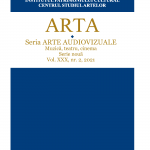
The fruitful activity of Valeriu Cupcea in the 1960s was manifested in the identity of his plays. In the comedy Take, Yanke, and Kadar by I. Popa, this is a union of people overcoming national and religious prejudices. In the socio-psychological drama from the life of a collective farm village The Wheel of Time by A. Lupan, this is the drama of the era, manifested in life situations, in dramatic collisions of the characters in the play. In the philosophical drama about the life and death of A. Levada’s Faust and Death, this is a clash of human destinies, in the struggle of worldviews. The play I Don’t Want You To Do Good For Me Anymore by G. Malarciuc is a satire against favoritism and nepotism. In the play Two Lives and the Third by F. Vidrascu, this is psychological certainty in revealing the spiritual dramas of the heroes. In the play The Crane Feathers by J. Kinoshita this is a poetical and philosophical reading of an old Japanese legend. In the play Eminescu by M. Stefanescu, this is a highly artistic embodiment of the images of Eminescu, Creanga, Alecsandri. In the play Blanduzia’s Fountain by V. Alecsandri, this is the disclosure of the tragic life of a poet who selflessly strives to bring love and goodness to people and dooms himself to death. And others.
More...
The inner mobility of the theater, doubled by the fast pace of life under the wave of postmodernity at the end of the twentieth century, conditioned not only the re-definition of a new theatrical language, but also the re-writing of dialogic forms specific to theatrical art. Or, in the texts of Constantin Cheianu, Val Butnaru, Nicolae Negru, Mircea V. Ciobanu, Dumitru Crudu, Irina Nechit, Maria Șleahtițchi and Nicolae Leahu, dialogue does not only have the classic role of triggering and motivating the action. The (sub)layers of conflict dialogues and „deaf dialogues”, parallel and echo dialogues, seemingly „absurd” association dialogues and „thesis-antithesis” dialogues, the dialogue monologues and the monologue dialogues evoke the alternation of linguistic registers and the play of languages. Completing and continuing the openness to multiple textual styles, the language of dialogues triggers and finalizes the communicative process between written and spoken, but also between text-show-audience. The „palpation” of the types of dialogues and the „immersion” in the mise en abysses of language give us the revelation of deciphering the symbols and meanings of contemporary national and universal drama and theater.
More...
In the second half of the XIX century provincial traveling circuses were quite common in Bessarabia. The first attempt to build a permanent circus in Chișinău was made on April 22, 1911. In March 1912, the owner of the Bristol hotel, Constantin Kolomandi, wrote to the Construction department of the Bessarabian Provincial Board a new request for the construction of a stone two-story building of the circus theater at the corner of Mikhailovskaya and Schmidt streets (today Mihai Eminescu and Metropolitan Varlaam streets). In May 7, 1912, he received an official building permit. In general, the construction of the building of the circus theater, which was supervised by the city architect Vladimir Țiganco, was completed on October 21, 1913. Later, the “Express” cinema was opened here. In the post-war period, this building was housed by the Moldavian Drama Theater. And in 1954, the premises were transferred to the Moldavian Philharmonic. But on September 24, 2020, the cultural heritage of Moldova was damaged as a result of a fire which seriously damaged most part of the building of the National Philharmonic „S. Lunchevici”. Today the building is in the need of restoration in order to preserve its historical, architectural and artistic value.
More...
The study addresses a wide range of interpretations of (H)ostropat dance from the repertoire of dance groups in the Republic of Moldova in the XXI century. (H)ostropat — represents a ceremonial dance that accompanies various ritual acts in the traditional wedding, being an expression of a specifi c language of communication that determined the very aesthetics of the dance, its forms of expression, stylistic norms of the repertoire, etc. Th e (H) ostropat dance, being part of the value system of popular culture, with some aspects of ritual and entertainment, highlights the importance of professional choreographic practice and the role of dance groups in cultural institutions of traditional amateur artistic activity. Th e author focuses her attention on the confi guration of the methodological apparatus of researching the repertoire of dance groups as a paradigm of a new stylistic direction and cultural identity in the realm of contemporary choreographic art. It is found that the tendencies of simplifying the ritual structure of the wedding and of compressing the temporal and spatial framework, the modernization of the ceremonial conception and the fl ow of new dances, created by professional artists or adapted from the repertoire of folk, neo-traditional and national dances in the region, have essentially marked the structure of the repertoire of the traditional dance groups.
More...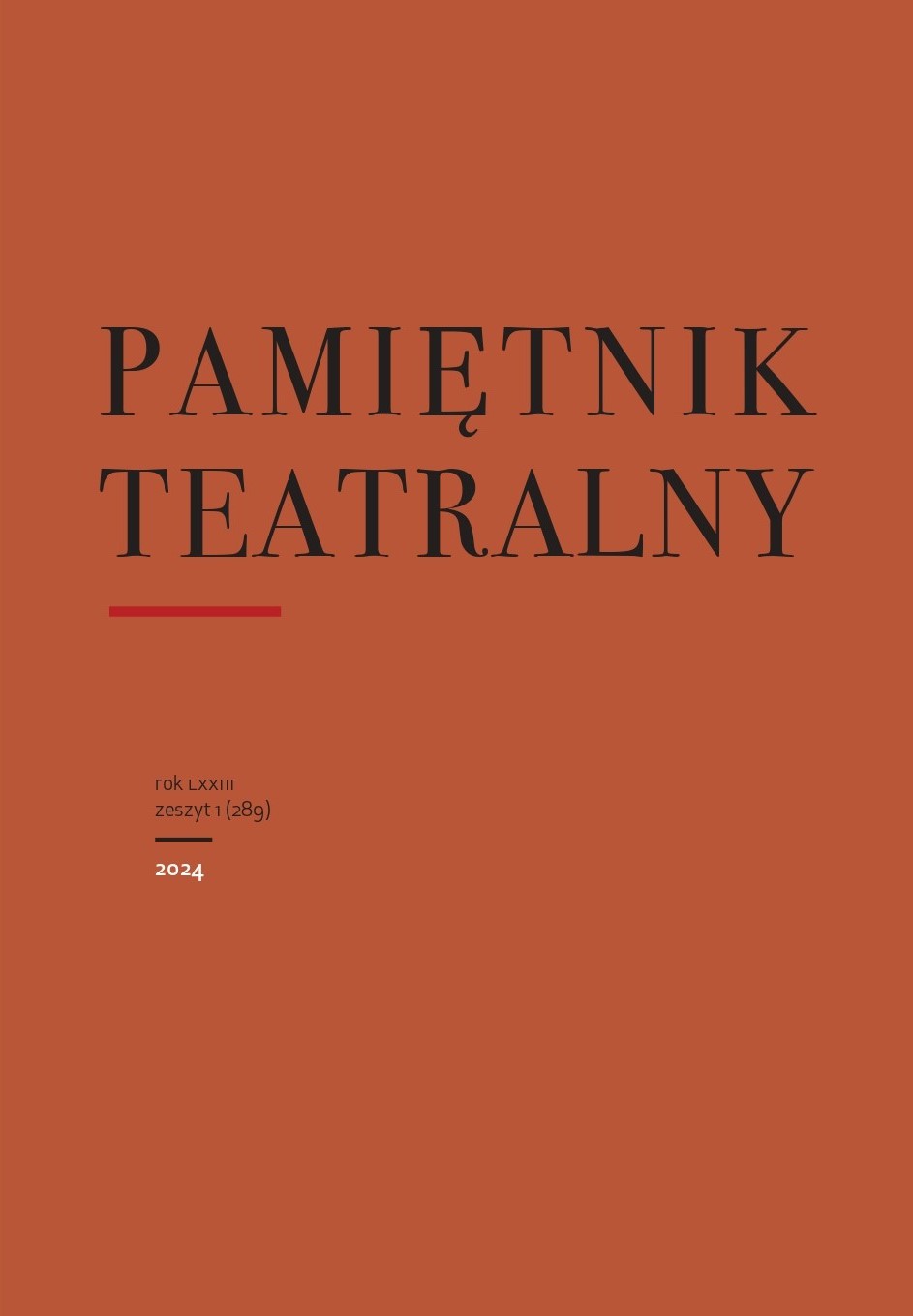
This article offers the first discussion of the fate of Jewish female dancers during the Holocaust. For young Jewish women who challenged the existing model of upbringing based on patriarchal tradition, modern artistic dance was an attempt at defining their own identity. Therefore, education in dance schools was very popular among Jewish girls and women, so much so that their pre-war graduates could be counted in hundreds. In terms of methodology, the article focuses on presenting individual life stories that can illustrate the scale of oppression experienced by Jewish female dancers. Their fates are presented as manifestations of three biographical matrices: emigration/fleeing/exile, life in the ghettos, and the attempt to survive on the Aryan side. At the same time, the article calls for systematic research on the subject.
More...
The article provides a brief analysis of the process of the artistic development of Alexandru Grecu’s creative personality and the manifestation of his distinct directorial peculiarities in the performances: Ce e viaţa omului/ What is the life of a man, Moţoc, Hercules, Unde mergem, domnilor?/Where are we going, gentlemen?, Triunghiul păcatului/The triangle of sin, Moliere, Căsătorie cu de-a sila/Forced Marriage, Ciuleandra, Care-s sălbaticii?/ Who are the savages?, Metamorphoses I, Metamorphoses II, S.R.L, The Moldovan, the Master and Margarita. Examining the peculiarities of Alexandru Grecu’s direction, the author reveals the artistic message that identifies the interconnection and interdependence of public life and of each individual in a rapidly changing world. The article emphasizes the fact that, being a relevant component of the artistic culture of the era of postmodernism, the performances of Alexandru Grecu, as a distinct sociocultural phenomenon, reveal through the prism of a multidimensional theatrical action the essence of the phenomena of social life, basing its artistic approach on the dramatic material, its stage interpretation, the situation and the moment in which the stage creation is produced.
More...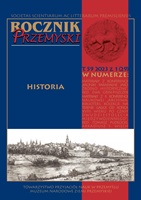
Review of: Cultural and Artistic Transfers in Theatre and Music. Past, Present and Perspectives, red. Michaela Mojžišová, Bratislava: Veda 2021, 268 s.
More...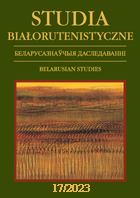
At the beginning of the 21st century, the societies of the post-Soviet countries are still faced with the problem of determining its position in relation to the Soviet past and selfidentification of national identity. The popularity of the nostalgic narrative about the lost socialist world order, actively supported by official propaganda in some countries, led to a paradoxical metamorphosis – the project of the future socialist society has become a symbol of conservative values and a glorious heroic past. Since the beginning of the 40s of the 20th century in the literature of the medium memory a mythologizing vision of the Second World War has become subjected. The subject of the article is the analysis of the drama of contemporary Belarusian writer Nikolai Rudkovsky “Дожить до премьеры” (“Live to See the Premiere”). Exploring the theme of war, the playwriter shows the evolution of the perception of a memorable event: from the high rank of a historical fact to the experience of an individual, doomed to operate in a warlike reality. The playwriter interprets collective memory and the Soviet, Russian and Belarusian literary canon in reference to various types of metatexts corresponding to the theme of war.
More...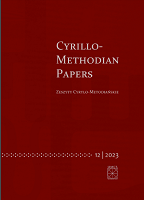
The paper examines the problem of reception of Tadeusz Slobodzianek’s play Our Class: History in XIV Lessons in selected countries of the postSoviet space. The choice of territory is dictated by the apparent cultural proximity of the studied areas, experiencing a similar historical burden. The author analyses professional and amateur reviews of the play as a written and performing act. The selection of texts is chosen to reflect the multifaceted nature of the audience’s opinions. The alleged reasons for the discrepancies in the play’s reception are discussed, including both qualitative and quantitative aspects. Particular attention is paid to literary, social, and political contexts. The analysis notes the polarisation of reception in Poland, the unification of the play’s complex semantic layer in Russia and the actualisation of the play’s issues in Ukraine. Overall remarks are also provided on the role of translation in determining the individual and global reception of a literary work.
More...